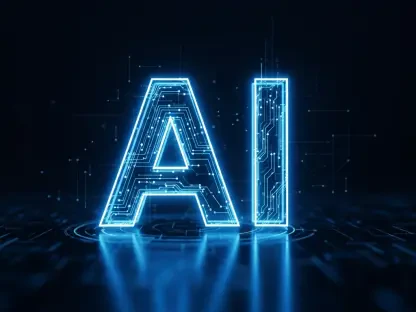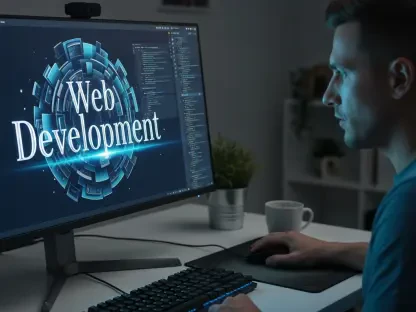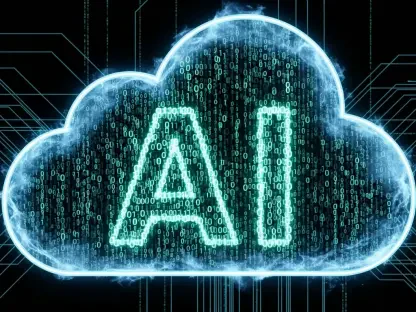As the technological landscape continues to evolve at a breathtaking pace, artificial intelligence has emerged as a pivotal player in the realm of software development. AI tools are no longer a futuristic concept but rather a present-day reality reshaping the way developers approach coding tasks. These tools are not just aiding programmers; they are transforming the entire development workflow, augmenting productivity, and streamlining processes. From improving the efficiency of code drafting and debugging to facilitating advanced problem-solving, AI has made significant inroads into the world of coding. As developers navigate this new era, the ability to effectively harness AI’s capabilities can be the difference between staying competitive and falling behind. This exploration delves into the leading AI tools and their impact on the coding ecosystem today, offering insights into how they are redefining traditional programming methods.
The Evolution of AI in Coding
Advances and Implications
Over the recent years, AI technologies have progressed significantly, leading to a transformation in software development practices. AI tools have shifted from being simplistic assistants that performed rudimentary tasks to sophisticated systems capable of complex analysis and problem-solving. This evolution has fundamentally altered how developers approach their projects. The most notable advancement has been in natural language processing and machine learning, which enables AI to understand, generate, and even predict human-like code. As a result, developers are now equipped with tools that can expedite coding tasks, reduce errors, and enhance their overall efficiency.
Responsiveness and accuracy in coding have also seen vast improvements due to AI advancements. Where once human oversight was necessary for most stages of coding, AI can now handle many components autonomously, identifying errors in syntax, suggesting improvements, and optimizing code structures for better performance. These capabilities not only enhance productivity but also allow developers to shift their focus to more creative and strategic aspects of development. This shift has implications for both new and experienced developers, providing learning pathways and enhancing skillsets through continuous interaction with AI tools.
Integration and Implementation
The integration of AI into established development environments has been seamless and widespread, transforming how developers interact with their coding platforms. Various AI tools have been designed to work in conjunction with popular development environments, enhancing the functionalities of IDEs (Integrated Development Environments) by providing real-time code suggestions, error detection, and smart analytics. This integration not only improves the coding experience but also accelerates the development lifecycle by shortening the time between concept and implementation.
These advancements in AI integration have been well-received across the industry, as they streamline workflows and enable developers to handle more complex coding tasks efficiently. AI-powered tools have transformed static environments into dynamic, intelligent platforms that learn and adapt over time. This adaptability is crucial in maintaining relevant and robust coding practices. As AI continues to integrate more deeply into these environments, developers can expect even more personalized and context-aware support. Furthermore, the scalable nature of these tools ensures their applicability across different project scales, from individual projects to large collaborative efforts.
Evaluating Leading AI Tools for Developers
ChatGPT Plus and Perplexity Pro
Among the frontrunners in AI-assisted coding, ChatGPT Plus and Perplexity Pro have emerged as robust tools with their unique strengths and limitations. ChatGPT Plus, powered by the versatile GPT-4o engine, stands out for its intuitive interface and comprehensive support during the coding process. Its ability to understand context, suggest code improvements, and provide detailed feedback on errors makes it a favorite among developers seeking reliability and ease of use. However, while ChatGPT Plus excels in many areas, it occasionally stumbles with more nuanced tasks, such as dual-choice questions, necessitating periodic human intervention.
Perplexity Pro distinguishes itself by offering access to multiple large language models within a single platform, allowing developers to leverage diverse AI capabilities for varying coding needs. This flexibility is immensely beneficial in complex projects requiring different coding paradigms. However, Perplexity Pro’s advanced security setups and login procedures can occasionally impede its accessibility. Despite these barriers, its multifaceted approach and capability to handle extensive data analysis and interpretation are highly valued in intricate programming endeavors.
Microsoft Copilot and Google Gemini Pro
Microsoft Copilot has markedly improved since its initial release, now offering an effective and largely free solution for coding assistance. Designed to seamlessly integrate within the developer’s workflow, Copilot enhances code quality by suggesting context-aware snippets of code and providing in-depth analysis of large codebases. Its ability to learn from a developer’s previous interactions further tailors its guidance, making it a personalized assistant in a coder’s toolset. These attributes have helped Copilot gain trust and acceptance within the developer community, shaking off earlier criticisms and proving itself an indispensable asset.
Google’s Gemini Pro stands alongside Copilot as a powerful AI in the coding arena. Version 2.5 showcases significant improvements over its predecessors, making it a formidable competitor. Its capacity for advanced problem-solving, coupled with a deep understanding of programming constructs, allows developers to navigate complex coding challenges with relative ease. However, the interface’s token-based pricing can introduce unpredictability in costs, potentially limiting its accessibility for some developers. Despite this, its capabilities in handling sophisticated tasks and offering practical solutions underscore its importance in modern development environments.
Real-World Implications and Future Prospects
Current Limitations and Growth Opportunities
Despite the impressive advancements AI has made in the field of coding, its application remains confined by specific limitations. While AI tools greatly aid in streamlining tasks and automating routine processes, challenges persist in handling larger codebases and complex algorithms without significant human oversight. This limitation highlights a critical area for future development, where AI systems must evolve to handle intricate programming tasks more autonomously. Additionally, while AI can propose solutions and enhancements, the human element is still necessary for creative problem-solving and the strategic alignment of coding projects within broader business objectives.
The potential for AI to overcome these limitations lies in the continuous development and refinement of machine learning models. By advancing these models’ capabilities in understanding and generating human-like reasoning patterns, developers can anticipate more sophisticated AI tools capable of addressing complex requirements independently. This evolution will likely encourage a more collaborative relationship between developers and AI, where both human and machine can complement each other in unprecedented ways. As AI continues to grow, its role in education and skill development is also anticipated to expand, providing new learning opportunities for upcoming developers.
Navigating the Future of AI in Coding
As AI continues to mature, its role in software development is set to expand further, offering new possibilities previously unimagined. The current trajectory suggests a future where AI not only assists but also actively shapes how coding is approached and executed. Developers, therefore, must be proactive in understanding and integrating these advances into their workflows. Embracing continuous learning and adaptation will be pivotal, allowing developers to take full advantage of AI’s potential in enhancing creativity, efficiency, and innovation.
The future will see AI becoming more ingrained in the development lifecycle, from initial concept brainstorming to deployment and maintenance. Developers who adapt to this change by understanding AI’s strengths and utilizing its vast potential effectively will find themselves at the forefront of technological innovation. As these technologies continue to evolve, fostering skillsets that complement AI’s capabilities will not only enhance productivity but also ensure robust, creative, and cutting-edge software solutions are delivered to market. In this rapidly changing landscape, embracing the synergy between AI and human creativity will be essential for success.









